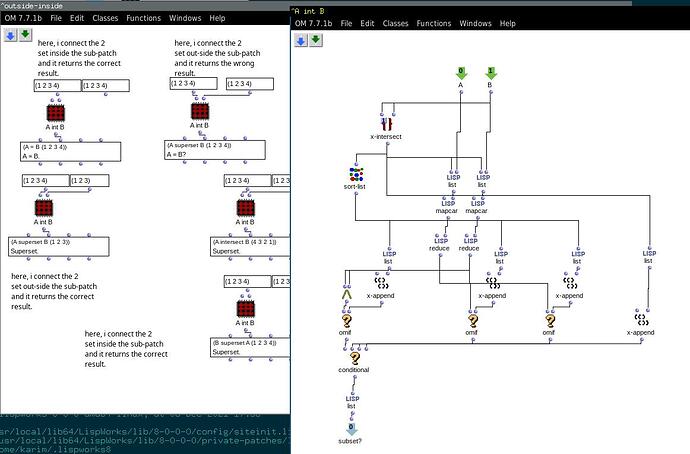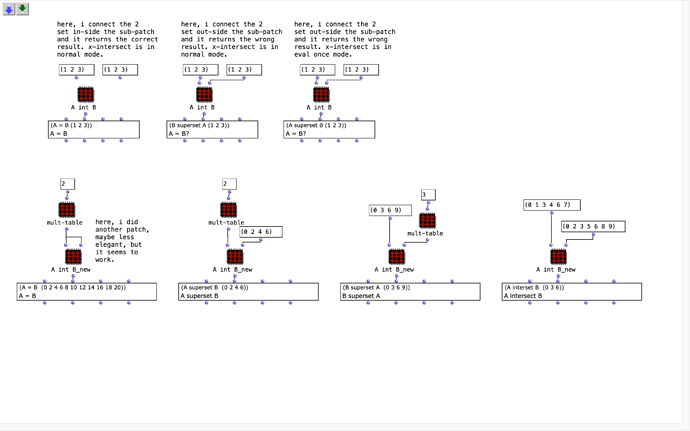Hello everyone, dear OMers.
I’m writing to report a problem I encountered using internal patches. The attached patch essentially contains an internal patch that applies the x-intersect function to two input lists, then performs some minor analysis with conditional operators (which I believe are irrelevant to the issue).
The problem is that for operations where the two numeric sets are equal or the second contains the first, the internal patch’s result is incorrect. It immediately occurred to me that I might have made a mistake in my programming, but I’m suspicious that if I insert the input lists from within the internal patch (by creating data boxes directly within the internal patch editor), the result I get is correct.
A small anomaly I also noticed is that if I customize the input arguments to evaluate the internal patch (double-click the green arrow icon - in the internal patch - representing the input, then insert a list to test the algorithm into the "default value” slot, and press apply), after two exact x-intersect evaluations, the list for one of the two inputs is reduced to a list containing the first element of the original list.
I’m using OM 7.6 and a MacBook Pro with an M1 chip with MacOS Sequoia 15.6.
I hope I haven’t posted a topic that’s already been addressed and resolved, in which case I apologize. Thank you in advance for your time and availability, and best wishes and a continued happy summer (at least for those in the Northern Hemisphere).
neo
outside-inside.omp (60.3 KB)



